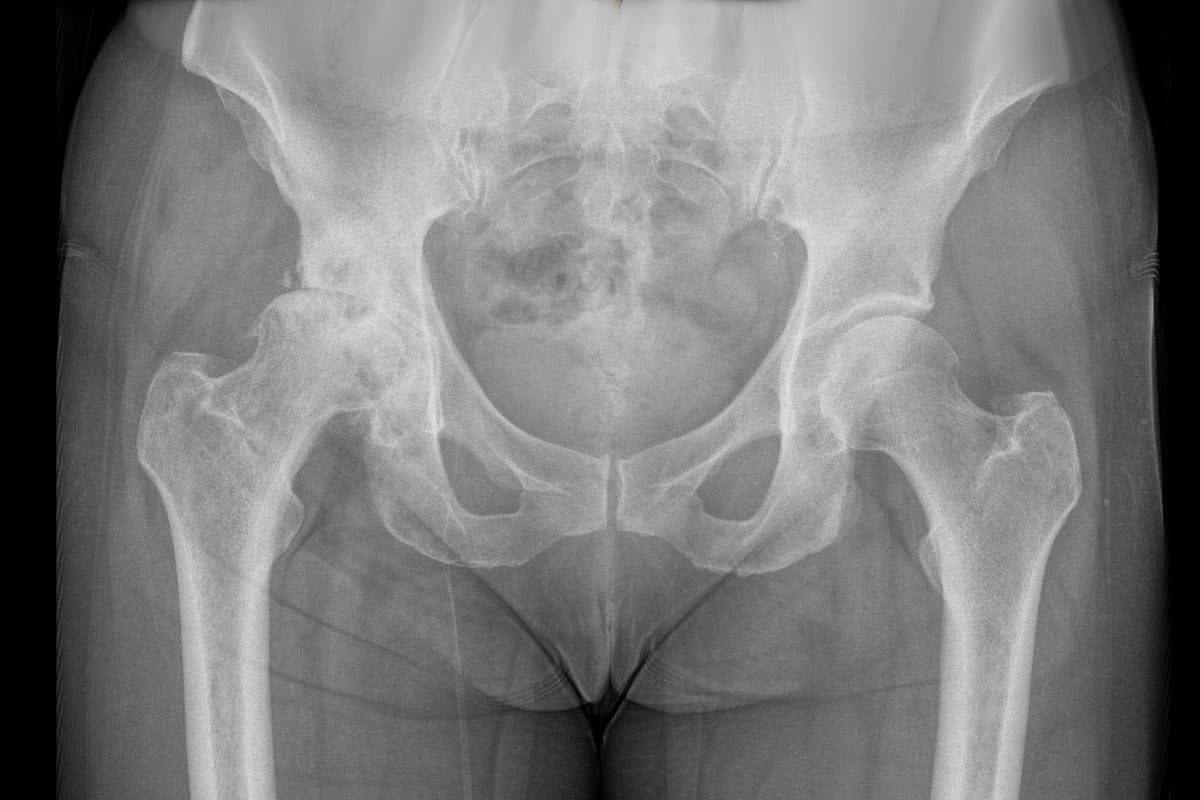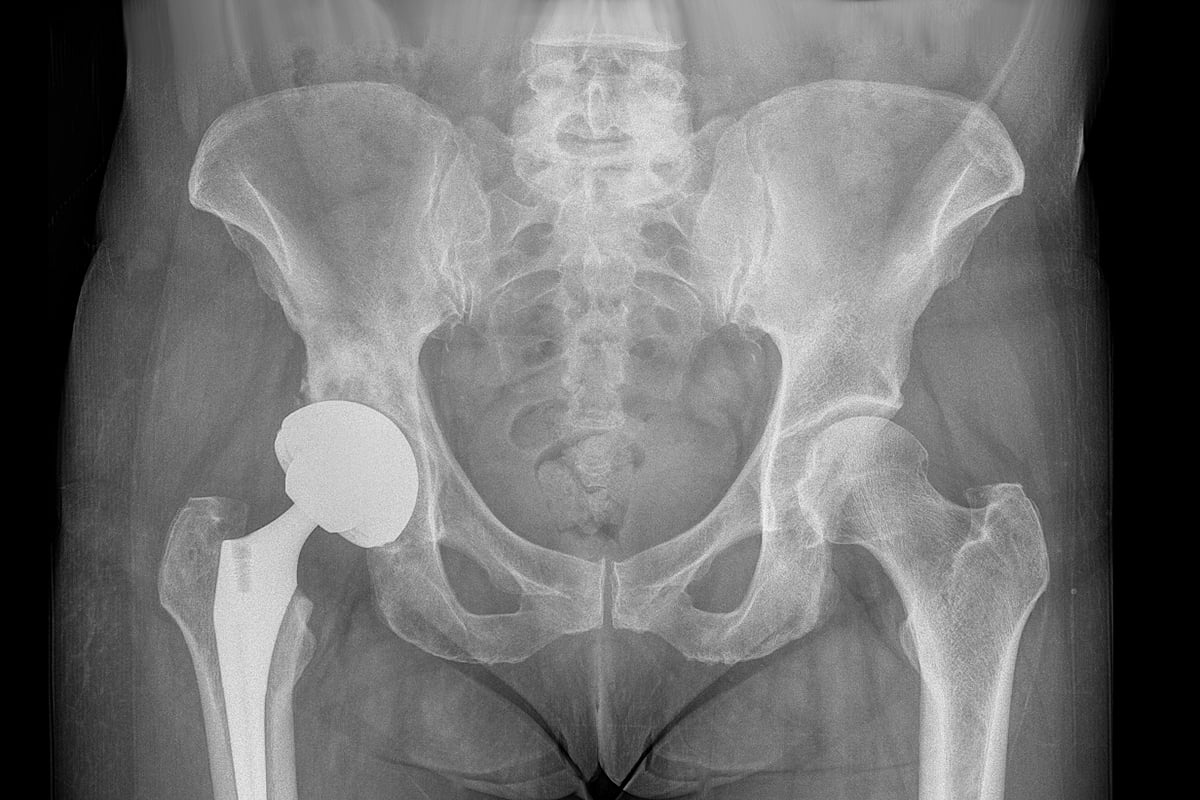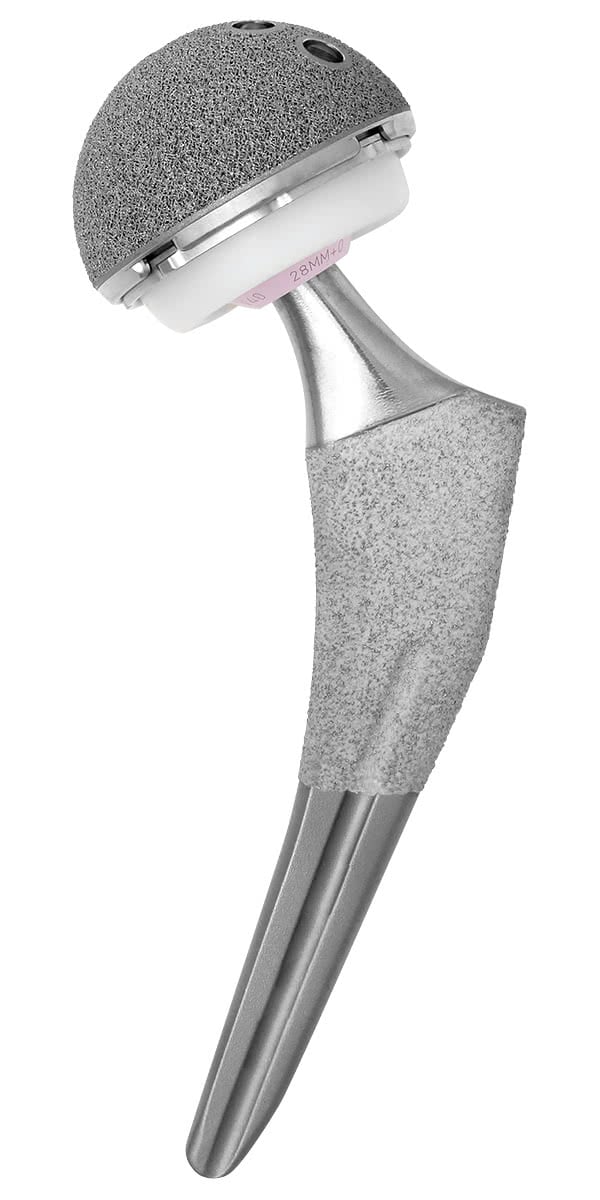Introduction
The Total Hip Replacement ('THR') procedure is a very common treatment, primarily for hip arthritis. Both forms of arthritis affecting the hip - inflammatory arthritis and osteoarthritis, cause pain and swelling, making day-to-day activities and movement difficult.
Another condition, avascular necrosis, which is caused by the restriction of blood supply to the bones in the hip, can also be treated by the procedure.
Patients undergoing a total hip replacement are generally able to resume normal activities after a recuperation period and regain the ability to move either without, or with substantially less, pain.
The success rate of the procedure is around 95% with more than 40,000 total hip replacement procedures conducted every year in Australia.


Indications
The time to consider undergoing hip replacement surgery is when the pain in your hip is so severe that it is having a significant impact on your day to day activities. It is important that you have tried all reasonable non-surgical treatments, as some patients with severe arthritis on their x-rays can still cope quite well without surgery. It is not until your pain is fairly constant and severe that the potential benefits of surgery outweigh the risks and make it worthwhile going through the recovery period.
Preoperative Instructions
You will be given a full briefing of how to prepare for your total hip replacement procedure well in advance of the day of surgery. In very general terms you will need to...
- Let our team know what other medication you are taking and follow our guidelines on taking these medications in the days/weeks before surgery.
- This is particularly pertinent to blood thinning medications such as aspirin, warfarin, clopidogrel and Xarelto.
- Let our team know if you develop symptoms of any illness (including a cold or fever) or if you believe you may be pregnant.
- If you smoke, stop smoking ideally several days or weeks ahead of the procedure, but at the very least not smoke after midnight the night before surgery.
- Maintain your strength and mobility as best as possible, some patients attend physiotherapy prior to the surgery in preparation.
- You will be seen in the hospital pre admission clinic and by the anaesthetist prior to surgery. They will give further details on the process and what to expect. Blood tests and an ECG test of the heart will be performed.
- Not eat or drink anything for a minimum of 8 hours prior to admission.
- Bring all available and relevant imaging with you to hospital.
- Ensure you are pre-organised at home with meals, mobility aids, and people to help over the first few days once you get home.
Procedure


The procedure involves replacing the existing hip joint with a prosthesis - an artificial hip joint. This prosthesis is a replica of the existing joint and comprises two components, the ball section of the joint, known as the 'femoral prosthesis' or 'femoral head', and the socket section, referred to as the 'acetabular prosthesis' (the medical name for the socket is the 'acetabulum'). These components are either metal or ceramic.
A total hip replacement procedure generally takes around 60 minutes to complete. Once the patient is under anaesthetic, they are placed on their side and an incision (around 15cm) is made over the hip joint. Next, the surgeon carefully moves muscle and ligament tissue to the side to expose the joint.
The surfaces of both the acetabulum and the upper section of the femur (thigh bone) are then prepared, prior to the artificial components being fixed in place.
In most cases there is no need to use any form of adhesive (in medical terminology referred to as 'cement') to keep the new components in place, as the new components have a coating on them which encourages natural integration with the existing bone tissue. This process creates a long-lasting bond.
The only occasions where cement may be needed is where the bone tissue may not integrate in this way, which can be the case in older patients (generally over 80) or where the patient has a bone disorder such as osteoporosis.
The final step of the procedure is the insertion of artificial cartilage, made from a special high-density form of polyethylene, or in some cases ceramic.
Postoperative Instructions
After the procedure you will stay in hospital for about three to four days, depending on your progress in therapy. You will be encouraged to get out of bed and walk around a little from day one and your therapist will guide you through some light exercises.
You will use crutches or other gait aids for mobility and safety, these will usually be required for three to four weeks.
At the point at which you are able to walk, sit in a chair (and get out of one) you will generally be able to return home. Some patients may take longer to reach this point than others.
You will be given a full set of rehabilitation instructions and exercises to follow when you leave hospital, however to avoid possible joint dislocation you should, during the 8 weeks after surgery, take extra care when getting in and out of seats in confined spaces (eg getting in and out of cars) and avoid sitting on low seats (including low toilet seats), or crossing your legs
You may drive once you can walk easily without gait aids. If it is the left leg and you have an automatic car this may be earlier.
Your first follow-up appointment will be scheduled for about 10 days after the surgery
Risks
All surgery carries with it some form of risk. Common risks that apply to all surgery, including total hip replacement, are...
- Bleeding.
- Formation of a blood clot.
- Infection. see notes on prosthetic joint infection.
- Nerve damage. Difficulty getting the wound(s) to heal.
- Abnormal pain reactions or nerve hypersensitisation known as complex regional pain syndrome (CRPS).
Risks that are related to a total hip replacement procedure include...
- Fracture of femur (this may occur during surgery or afterwards).
- Dislocation of the artificial joint.
- Slight discrepancy in leg length.
- Longer term failure or wear of the prosthesis.
Mr Callahan will be able to discuss all of the details relating to risks and benefits of the procedure at your initial meeting.
